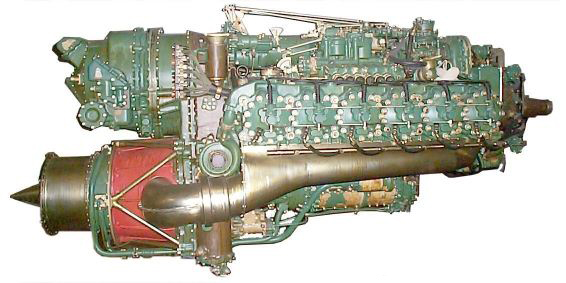Hey guys,
Let's ask the administrator to move this to its own thread,it's getting pretty interesting.
Let's ask the administrator to move this to its own thread,it's getting pretty interesting.
Disclaimer: Links on this page pointing to Amazon, eBay and other sites may include affiliate code. If you click them and make a purchase, we may earn a small commission.
The EPA has already been greatly limited by a few SCOTUS rulings. IOW...sit down the court said.EPA wants carbon based fuels gone.
The Germans tried to perfect a rotary valve for their Messerschmitt's during WWII. They couldn't get it to work but later it became the Wankel rotary engine. Yeah,that didn't work so well either.
Napier later returned to turbo-compounding with its Nomad engine intended for aviation. It eschewed opposed pistons in favour of a more conventional layout of twelve opposed cylinders (pointing away from a single crankshaft) and with loop scavenging (as opposed to the uni-flow of the Deltic). Similar to the Deltic in that its turbo-compounding benefitted from advances in gas turbine development, it shared its fate in becoming a victim of their success. A case of what might have been had gas turbines not been so well suited to high elevation flight. Ditto the Rolls-Royce Crecy - another large capacity (but spark ignition) 2T that deployed its exhaust energy to good effect (direct thrust in high speed flight) and never quite saw the light of day.Opposed piston?
Take a look at youtube videos for the English Napier Deltic 88 liter Diesel two-stroke triangle engine as used in ships and locomotives. Two crankshafts rotate the same direction, the third rotates backwards. 18 cylinders, but 36 pistons--like three V-12s mating.
Example:
xc_hide_links_from_guests_guests_error_hide_media

…then they do an end run around SCOTUS rulings by creating the Climate Corp.The EPA has already been greatly limited by a few SCOTUS rulings. IOW...sit down the court said.

I stand corrected.Felix Wankel patented and produced a rotary pump in the 1930s. Being an engineer he immediately realized it could be used as an engine, and in the 1950s he joined NSU and started work on it.
Audi talked about doing it - as a range extender - a throwback to its NSU connections perhaps but made no sense to me. The rotary is inherently thirsty for fuel and, Audi cited its smoothness as a reason to choose it but overlooked that when you are extracting the energy via wires (not mechanically) there is no torque reaction to contend with so engine mounts can be as soft as marshmallow and insulate the roughest of running engines. That was ten plus years ago and nothing more has been heard of it.The long, moving combustion chamber is a detriment to efficiency, but a rotary engine in a stable rpm works great. I'm kinda surprised Mazda hasn't made a rotary hybrid vehicle. Back in the '80s the military commissioned Racing Beat to build a generator prototype, but I think that went away when they switched to a single fuel.
An exhaust valve is a physical impediment to flow and absorbs heat. Without it, a turbo's turbine gets higher pressure and more heat - the latter less important on a diesel though.What does an exhaust valve have to do with it? The port serves the same function. Nobody says the Detroit Diesel turbos well because it doesn't have an exhaust valve.
Unburned fuel is unburned fuel is fuel wasted. Unless there's a supplementary source of ignition between the port and the turbo, that unburned fuel is lost.A more accurate statement would be that the long combustion chamber in a rotary causes more fuel to go unburned, and that a turbo recaptures that.
Fast opening ports (uncovered by a piston or a rotor) beat poppet valves hands down. And let everyone know by the noise they make!You are correct that the ports mean more charge flow at points where a piston engine would be struggling to safely ramp a valve open or closed.

